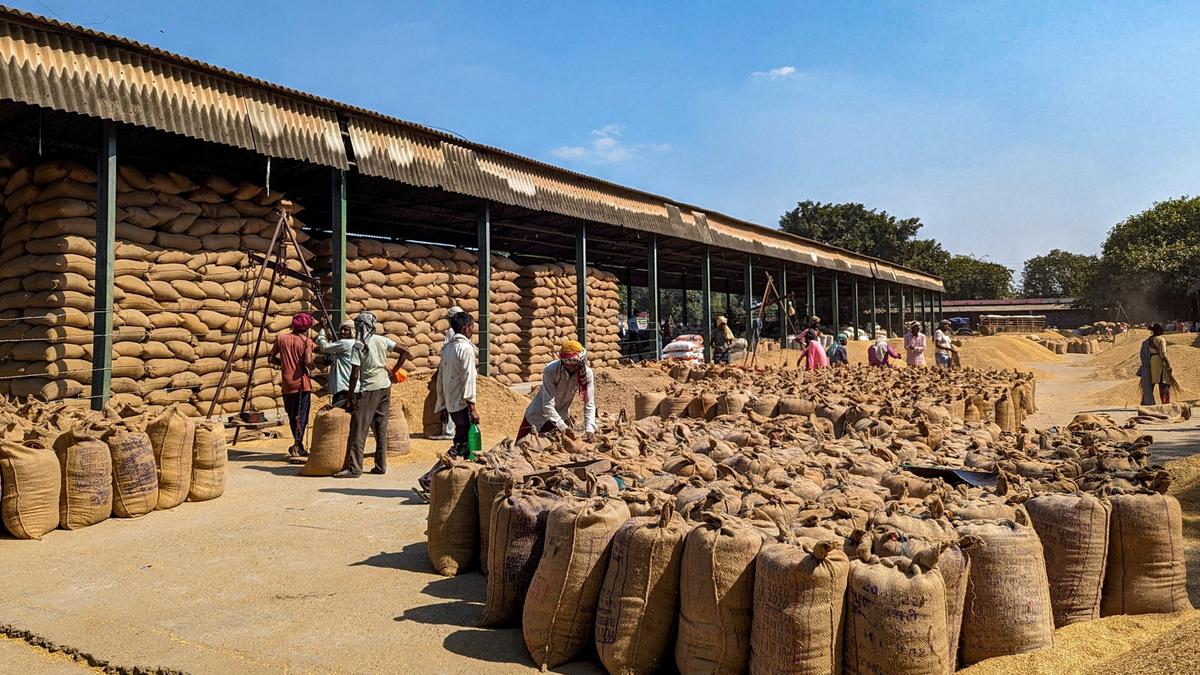
Maintaining excessive import duties on delicate agricultural commodities like rice and resisting strain to open up the home sector to low tariffs shall be essential for preserving India’s self-sufficiency and guaranteeing meals safety for its inhabitants, a report stated on January 1.
Economic assume tank GTRI (Global Trade Research Initiative) in its report stated that India wants to chop its reliance on imported vegetable oils to advertise higher well being outcomes and likewise scale back the import invoice.
This will want educating customers in regards to the well being advantages of utilizing regionally produced oils like mustard, groundnut, and rice bran in lieu of imported oils.
India is the world’s largest importer of vegetable oils, with imports estimated to double to $20.8 billion in 2023-24 from $10.8 billion in 2017-18.
It added that the U.S. and E.U. at the moment assist agriculture by utilizing the newest know-how to maximise output, excessive tariffs (or import duties) to discourage imports and large subsidies to push exports.
Developed and agricultural-exporting nations like Australia all the time push creating nations like India to chop duties and subsidies on agricultural commodities to push their exports.
India has constructed a excessive import tariff wall (30-100% on delicate gadgets) to examine subsided imports. India additionally doesn’t reduce tariffs on delicate gadgets for even its FTA (free commerce settlement) companions.
The report stated that this has paid India with self-sufficiency in nearly all merchandise.
“India needs to continue with its current approach to not open the domestic agriculture sector to low tariff subsidised imports. Upholding high import tariffs on sensitive items and resisting pressure to open up the domestic agriculture sector to low-tariff subsidised imports will be crucial for preserving India’s hard-earned self-sufficiency and ensuring food security for its burgeoning population,” it stated.
According to the UN’s Food and Agriculture Organisation, web cereal imports by creating nations will nearly triple over the subsequent 30 years whereas their web meat imports may even improve by an element of virtually 5.
While most nations shall be depending on meals imports, India is fortunate to be self-sufficient in all agriculture and meals gadgets besides vegetable oils.
India’s agricultural imports are estimated to the touch $33 billion in 2023 which shall be simply 4.9% of whole merchandise imports.
“This has become possible due to focus on policies like the green and white revolution, high import tariffs and active negotiations at the WTO (World Trade Organisation) to protect food security concerns for the 1.4 billion people over developed country pressure to open Indian agriculture to subsidised imports,” GTRI co-founder Ajay Srivastava stated.
On the sugar sector, the report stated that India is the world’s largest sugar exporter after Brazil, however this 12 months, it’s going to import sugar in huge portions because the sugar imports are estimated to develop steeply by 385.4%, from $252 million in 2022 to $1,223.4 million in 2023.
Imports have elevated in 2023 on account of a decline in home manufacturing brought on by weak rains.
India dominates the worldwide sugar scene as the most important producer, client, and second-largest exporter. Its sugar business, rating second in agricultural-based sectors, employs thousands and thousands.
“Despite this, the industry faces competitiveness challenges, relying heavily on subsidies, free power, and water, leading many times to overproduction and market volatility. Water scarcity compounds issues, threatening industry sustainability,” Mr. Srivastava stated.
To thrive, the Indian sugar sector should purpose to spice up sugarcane yield from 55 to the worldwide common of 70 tonnes per hectare, free from subsidies.
“Production uncertainties force frequent policy changes to keep local prices in control, but dissuading long-term investments and hindering strategic planning for future businesses,” he added.
Vegetable oil, pulses, and recent and dry fruits account for 72.1% of agriculture imports of India in 2023. Vegetable oil is the most important import constituent, accounting for 51.9% of whole agriculture imports of India.
India imports 4 sorts of oils: Crude Palm Oil (CPO), Soya Bean Crude Oil, Crude Sunflower Seed Oil, and Refined Bleached Deodorized (RBD) Palmolein.
The report stated that imports in 2023 are set to say no by 18.6% to $17.1 billion in comparison with 2022, primarily on account of a fall in import costs, not in portions.
Further, it stated that India’s pulses imports are anticipated to rise by 44% to surpass $2.7 billion in 2023 as in comparison with 2022.
The main pulses and import values in 2023 are Masoor (lentil) at $1.13 billion, Arhar/Tuar (pigeon peas) at $766 million, Urad (beans of vigna mungo) at $536 million, Rajma (kidney beans) at $120 million, and Kabuli Chana at $76 million.
India is the world’s largest producer and client of pulses. It goals to reinforce home manufacturing and reduce imports by introducing high-yielding, disease-resistant pulse varieties.
The key challenges embrace addressing water shortage and mitigating market volatility points.
“Major efforts extend to reclaiming fallow land, promoting intercropping, and focusing on rainfed areas. Also, the market and infrastructure support involve ensuring fair prices through Minimum Support Price (MSP), investing in storage and processing, and establishing direct marketing channels,” he stated.
Source: www.thehindu.com



